I have been working on a project for a while. I am building a playing card deck class that I will eventually use in making my own solitaire game. I decided to use images for the indexes of the card rather than having java draw them. I have drawn my own suits in Illustrator and saved them as PNG's with a transparent background. I am able to get the image to show up in my program when I rum it, however when I add the image to my JFrame the background color disappears leading me to believe that for some reason the transparency is not being kept. I have tried two different methods of adding the image to my GUI and have the same result both times. One method I have tried is the method suggested here How to add an image to a JPanel? and the other method I have tried is the one suggested here How can I display a BufferedImage in a JFrame? Both of these methods are not what I am looking for. I want my suit to display on screen and be able to see the background still.
Here is the current code I would like to get working properly, I do realize that it compiles and runs just fine, but I want to be able to still see the background.
import java.io.File;
import java.io.IOException;
import java.awt.Color;
import java.awt.Graphics;
import java.awt.Image;
import java.awt.image.BufferedImage;
import javax.swing.ImageIcon;
import javax.swing.JFrame;
import javax.swing.JLabel;
import javax.swing.JPanel;
import javax.imageio.ImageIO;
public class ImageReadTest extends JPanel{
public static void main(String[] args){
//Just a simple test on reading pictures into a java file and drawing them
//onto a JFrame
System.out.println("Java Image Read Test");
JFrame frame = new JFrame("Image Reader");
frame.setDefaultCloseOperation(JFrame.EXIT_ON_CLOSE);
frame.setBackground(Color.green);
frame.add(new ImageReadTest());
frame.pack();
frame.setSize(250,250);
frame.setLocationRelativeTo(null);
frame.setVisible(true);
}
private BufferedImage image;
public ImageReadTest(){
try{
image = ImageIO.read(new File("Club.png"));
} catch(IOException e){
System.out.println("Error");
}
}
@Override
protected void paintComponent(Graphics g){
super.paintComponent(g);
g.drawImage(image, 90, 90, null);
}
}//end class ImageReadTest
Here is my image for testing my code, thanks for taking the time to read and help!
